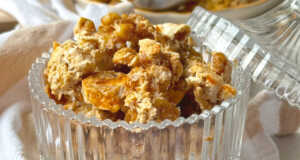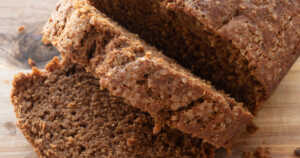Volga German Cabbage and Dumplings

Volga German Cabbage and Dumplings is a simple stew that’s comforting to eat and easy to make. It is the remedy to a near-empty pantry, the second heater to warm you up, and harnesses a comfort food heft to combat the chilly nights. It’s a simple dish, but it doesn’t have a simple past.

This dish is a fusion of two cultures merging onto the harsh, biting lands off the banks of Russia’s Volga River. It was under Catherine the Great’s reforms that the southern Volga River transformed from a bandit-ridden region to one that was immensely populated. In 1763 one of Catherine the Great’s manifestos hit a successful note in Western Europe which had been ravaged by the Seven Years’ War. In the decree, any foreigner could travel to Russia at the cost of Russia, practice their religion (as long as they didn’t try to convert Russian Christian citizens), get interest-free loans for building and farm equipment, and wouldn’t have to participate in military service — all of which was seen as a great opportunity for many.
Of the approximately 30,000 Germans that immigrated to Russia, most were guided to the Volga River where as the years passed, it became a unique enclave of German settlers. There these Germans celebrated German holidays, built buildings in the German style, and practiced Christianity-like Catholicism, Reformists, Lutheran, and Mennonite. While a lot of their German ways were preserved, the language became a unique mix of Russian and old German.

After Catherine the Great’s death, the manifesto’s protections were slowly stripped away and many Volga Germans immigrated to the States. They settled in Kansas and Nebraska, where the farmlands and harsh winters were quite similar to the Volga River’s climate. Since they spoke an older German peppered with Russian, it was impossible to communicate with the German-American immigrants. With these language restrictions, the Volga Germans were an isolated community that kept and preserved their recipes, many of which have remained unchanged over time.
The food of the Volga German was also influenced by its Russian land. In Germany, cabbage was a side dish, but in Russia, the Volga Germans saw cabbage become a main part of the meal, as cabbage was one of the successful crops alongside wheat and potatoes. A lot of the Volga German dishes are a combination of wheat, cabbage, and potatoes in different ratios and with slightly different ratios of liquids or fat.
Here, this Volga German Cabbage and Dumplings only have two of the three staple crops of the region.


The dumplings are of the rustic variety, having no leavening, making for a dense but hearty dumpling. If you want to add some levity to your dumpling base, you can add a bit of baking powder and baking soda. Dried herbs and some salt and pepper are the only seasonings to this egg-based dumpling. The dumpling mixture will be thicker than your average drop biscuit or dumpling, but it shouldn’t be dry. If the batter is looking dry, add some milk, one tablespoon at a time, to the dough.


Bring the water to a boil and dip a spoon into the hot water before scooping the batter and dropping it into the boiling water. Move the dumpling around to prevent it from sticking to the bottom of the pot. With each dumpling, dip the spoon in hot water, this will make it easier to portion out the dough and easier to drop it into the boiling water.
Initially, all of the dumplings will sink to the bottom of the pot, but after a few minutes, the dumplings will float up to the surface of the water and that’ll be an indicator that they’re done.


Once the dumplings are cooked and set aside, the cabbage base can be made. After sautéing the onions in half of the butter, add in the chopped cabbage alongside the garlic powder, chicken stock, and remaining butter.

Cover with a lid and let the cabbage and onions cook together until the cabbage is softened slightly.

Add the dumplings into the pot and gently toss to combine.

The end result? Comfort in a pot. The cabbage is tender and its natural sweetness is enhanced by the sautéed onions. The dumplings are hearty and have a satisfying contrast of texture with a heavy dose of black pepper and dried herbs.

The stock and butter bring the dish together, creating a stew-like quality to it, perfect for chilly fall and winter evenings.

The bits of dried herb in the dumplings add a lot of savory herbaceousness, giving the dish a well-needed body against the bed of tender butter-stewed cabbage.

It’s a simple and soul-satisfying dish that preserves a culture and the legacy of the people who made it.
Volga German Cabbage and Dumplings (Kraut und Kleis/Краут унд клейс)
Yield(s): Serves 4 to 6
20m prep time
40m cook time
For the Dumplings:
- 1 cup all-purpose flour
- 1 teaspoon dried thyme or parsley
- 3/4 teaspoon black pepper
- 1/2 teaspoon salt
- 1/2 teaspoon baking powder (optional)
- 1/4 teaspoon baking soda (optional)
- 2 large eggs, room temperature and whisked
- 1 to 3 tablespoon milk, if needed
For the Cabbage:
- 4 tablespoons unsalted butter, divided
- 1 large onion, roughly chopped
- 1 medium cabbage, chopped into large chunks
- 1/4 cup vegetable or chicken stock
- 1/2 teaspoon garlic powder
- 1 tablespoon roughly chopped fresh parsley, for garnish
- Kosher salt and freshly cracked black pepper, to taste
To make the Dumplings:
- In a large bowl combine flour, thyme, black pepper, and salt. If you want lighter dumplings, mix the baking powder and baking soda into the dry ingredients as well.
- Make a well in the center of the dry ingredients and pour in the whisked eggs.
- Mix the dough together forming a stiff dough. If the dough is too dry, add in milk, 1 tablespoon at a time.
- Bring a pot of water to boil and season with some salt.
- Drop in tablespoon-sized portions of dough into the boiling water. Before portioning out the next dumpling, dip the spoon in hot water to prevent the dough from sticking to the spoon.
- When the dumplings float to the top, then they are cooked through and done. Remove from the water and set aside on a plate.
To make the Cabbage:
- In a large pot melt 2 tablespoons butter and saute the onion with some salt until softened and slightful golden in color, about 8 to 10 minutes.
- Add in remaining butter, cabbage, stock, garlic powder, salt, and pepper, stirring to combine.
- Bring to a simmer and cover with a lid cooking until the cabbage is cooked through.
- Once cabbage is cooked through, add in dumplings, tossing gently to combine. Season again with salt and pepper, garnish with parsley, and enjoy!
Recipe adapted from Via: Food.com.















